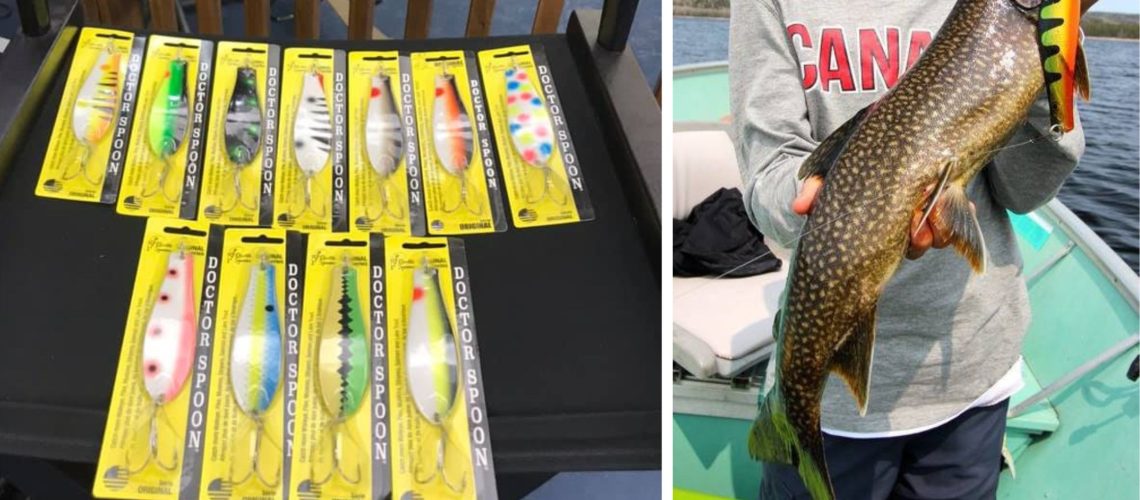Discover the rich history and versatility of fishing spoons. These lures, made from hammered metal, mimic injured baitfish to attract fish. Types like casting, jigging, trolling, and flutter spoons offer unique actions for varying techniques. Choose based on your target species and fishing depth—larger spoons for big fish, smaller for trout. Master techniques like jigging, casting, and trolling to maximize your catch. Proper care—cleaning, checking for damage, and storage—is crucial for longevity. Uncover more about fishing spoons to elevate your angling game.
History of Fishing Spoons
Fishing spoons have a rich history dating back several decades, with anglers across generations utilizing them as effective fishing lures. These lures have stood the test of time and continue to be a go-to choice for many fishermen. Originally made from hammered metal, fishing spoons were designed to mimic the flash and movement of injured baitfish, making them irresistible to predatory fish. Over the years, advancements in technology and materials have led to various shapes, sizes, and finishes of fishing spoons, catering to different fishing conditions and target species.
Anglers have found success using fishing spoons in both freshwater and saltwater environments. Whether you’re targeting bass, trout, salmon, pike, or redfish, there’s a fishing spoon out there for you. The versatility of fishing spoons makes them a staple in many tackle boxes, providing anglers with a reliable option to attract fish in a wide range of situations. So, next time you hit the water, don’t forget to bring along a few fishing spoons to increase your chances of a successful day on the water.
Types of Fishing Spoons
With a variety of shapes, sizes, and finishes available, fishing spoons cater to different fishing conditions and target species, ensuring you have a versatile lure option in your tackle box.
Casting Spoons: Ideal for casting long distances and covering a large area of water surface.
Jigging Spoons: Designed to be vertically jigged up and down, mimicking injured baitfish.
Trolling Spoons: Effective when trolling at various depths to attract predatory fish.
Flutter Spoons: Flutter down through the water column, imitating a dying baitfish.
Each type of spoon has its unique action and use, allowing you to adapt to the fishing environment and the behavior of the fish. Experimenting with different types of fishing spoons can help you determine which works best for specific fishing situations.
How to Choose the Right Spoon
To select the appropriate spoon for your fishing needs, consider the target species and the depth at which you plan to fish. Different spoons are designed to attract specific types of fish based on their size, swimming habits, and feeding preferences. For example, larger spoons are often used for bigger species like pike or muskie, while smaller spoons may be more suitable for trout or panfish.
The depth at which you plan to fish is also crucial in choosing the right spoon. Some spoons are designed to sink quickly and reach deeper waters, while others are better suited for shallower areas. If you’re targeting fish that dwell near the bottom, a heavier spoon that sinks rapidly might be the best choice. On the other hand, if you’re fishing in shallower waters or near the surface, a lighter spoon that flutters down more slowly could be more effective.
Techniques for Using Fishing Spoons
When using fishing spoons, adjust your technique based on the target species and desired depth of your fishing location. Here are some effective techniques for using fishing spoons:
Jigging: Drop the spoon to the desired depth and jerk it upwards with a sharp motion to simulate an injured baitfish, then let it flutter back down. This technique works well for enticing predatory fish like bass and pike.
Casting and Retrieving: Cast the spoon out and reel it back in at varying speeds. This mimics a fleeing baitfish, triggering strikes from aggressive predators such as salmon and trout.
Trolling: Attach the spoon to a downrigger or planer board and troll it behind your boat at different depths and speeds. This method is excellent for covering a larger area and targeting a wide range of species.
Vertical Jigging: Drop the spoon straight down and jig it up and down rapidly. This technique is effective for catching fish holding near the bottom, such as walleye and perch.
Experiment with these techniques to find what works best in different fishing scenarios.
Maintenance and Care Tips for Spoons
Proper maintenance and care are essential to ensure the longevity and effectiveness of your fishing spoons. After each fishing trip, make sure to clean your spoons thoroughly with fresh water to remove any saltwater or debris that could cause corrosion. Inspect the spoons for any signs of damage, such as chips or cracks, and replace them if necessary to maintain optimal performance.
To prevent rusting, dry the spoons completely before storing them. Applying a thin layer of oil or lubricant can help protect the metal surface from oxidation. Store your spoons in a cool, dry place away from direct sunlight to prevent discoloration or warping.
Regularly check the hardware components of the spoons, such as split rings and hooks, and replace any that show signs of wear or rust. Sharpen dull hooks to ensure better hooksets and increase your chances of landing fish. By following these maintenance and care tips, you can prolong the life of your fishing spoons and continue to enjoy successful fishing adventures.
Maximize Your Chances of Landing the Catch of a Lifetime with Yellow Bird Fishing Products
Incorporating fishing spoons into your tackle box can elevate your angling game to new heights. With Yellow Bird Fishing Products‘ extensive range of high-quality spoons and insightful guidance, you can maximize your chances of landing the catch of a lifetime.
Remember to choose the right spoon for your target fish, use the proper techniques, and maintain your spoons for optimal performance.
For superior fishing spoons, contact Yellow Bird Fishing Products at (815) 469-9686 today.





